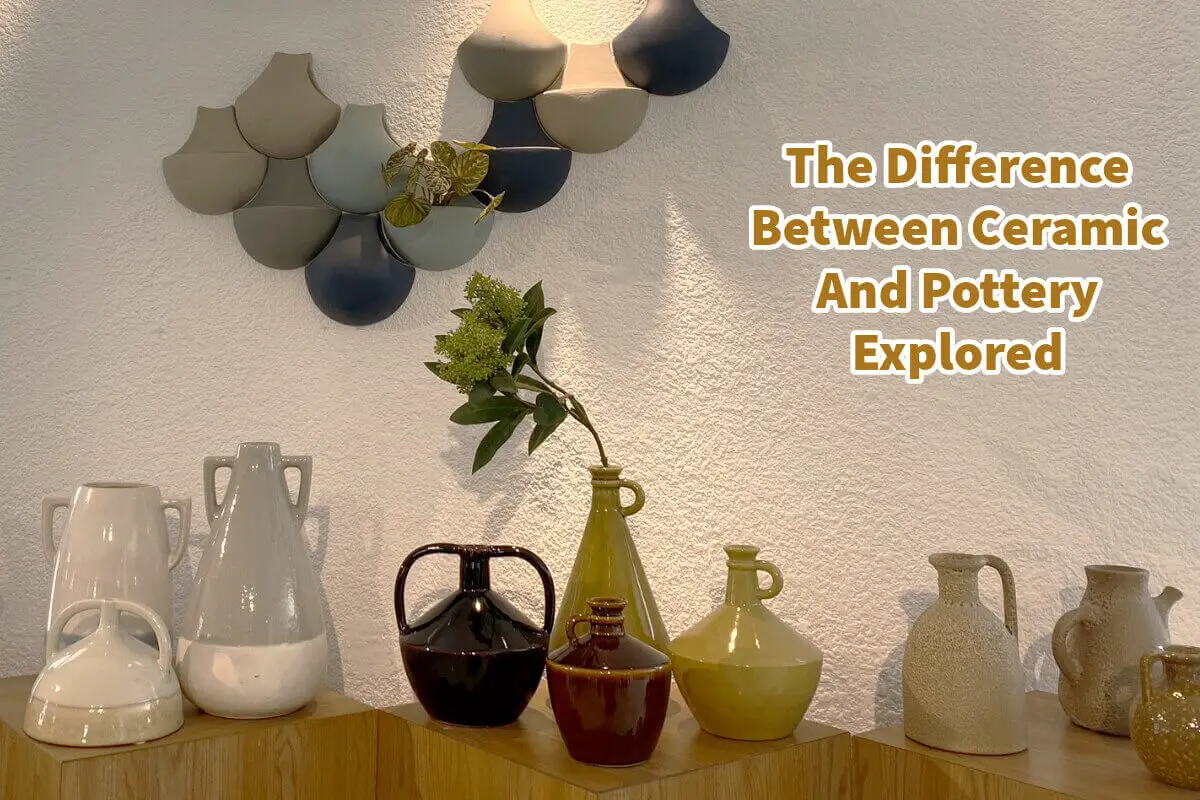While the terms “ceramics” and “pottery” are often used as if they’re synonymous, the reality is that they represent distinct categories. Your morning mug and the spark plug in your vehicle might fall under the ceramic umbrella, yet they may not be considered pottery.
Ceramics and pottery are two forms of craftsmanship essential to our cultural heritage, and technological advancements are distinct in several key aspects. So, what sets ceramics apart from pottery? Can we categorize any clay-made object as pottery? And is clay the sole foundational material for all ceramics? Read on as we aim to delve into these questions, clarifying what makes ceramics and pottery different yet intrinsically related.
Table of Contents
- The Difference Between Ceramic And Pottery: Unraveling The Intricacies Of Earth And Fire
- The Key Differences Between Pottery And Ceramics
- Frequently Asked Questions
- Related Content
The Difference Between Ceramic And Pottery: Unraveling The Intricacies Of Earth And Fire
Pottery and ceramics often create confusion. They seem interchangeable to man yet hold distinct meanings for those in the know.
From your coffee mug to the spark plug in your car, ceramics and pottery have been indispensable to human culture and technological development for millennia. But what makes a ceramic different from pottery?
Is every object made out of clay considered pottery? And are all ceramics birthed from clay?
What Are Ceramics?
Ceramics is a broad term that encompasses objects made from inorganic, non-metallic materials permanently altered by heat. It includes materials like clay, earthen elements, powders, and water. These are shaped into desired forms and then subjected to high temperatures.
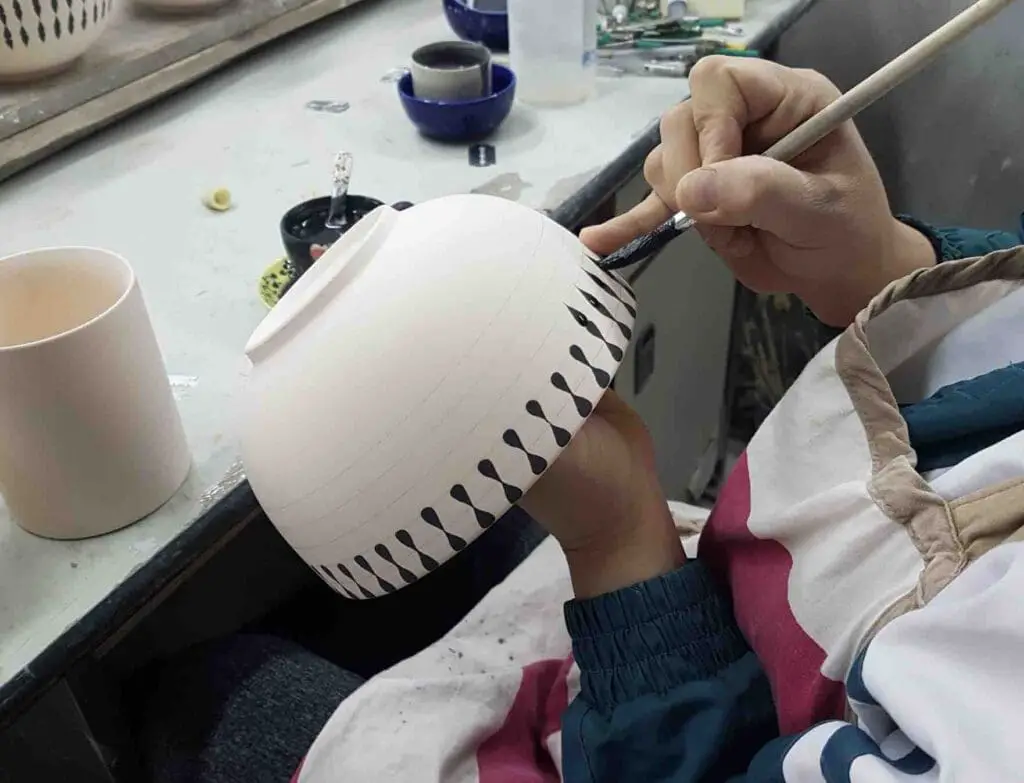
A primary feature of ceramics is their ability to undergo irreversible changes when heated. For instance, clay contains chemically bonded water that will cause it to dissolve if exposed to water in its raw form.
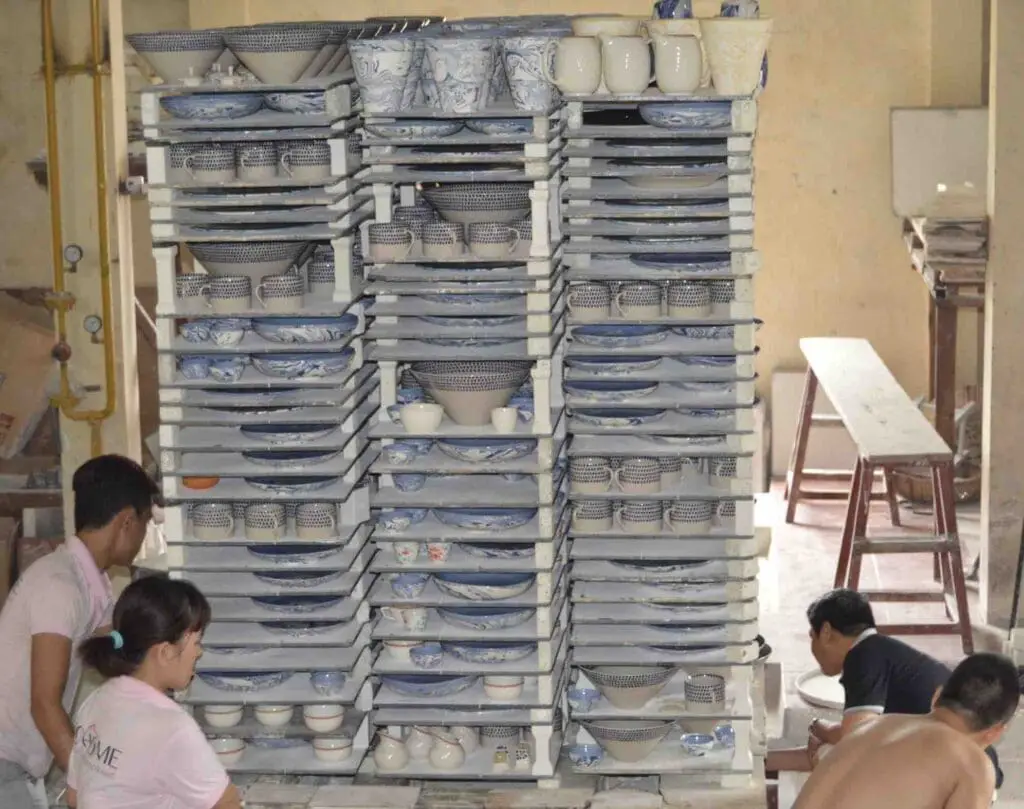
However, once fired between 660 and 1470 F (350 and 800 C), the clay becomes a ceramic material that is no longer soluble. Notably, ceramics can also include materials like silica carbide and zirconium oxide used for industrial purposes.
These are significantly different from the clay-based ceramics most people are familiar with.
What Is Pottery?
Pottery, on the other hand, is a more specific subset of ceramics. The term is commonly used to refer to objects made primarily from clay.
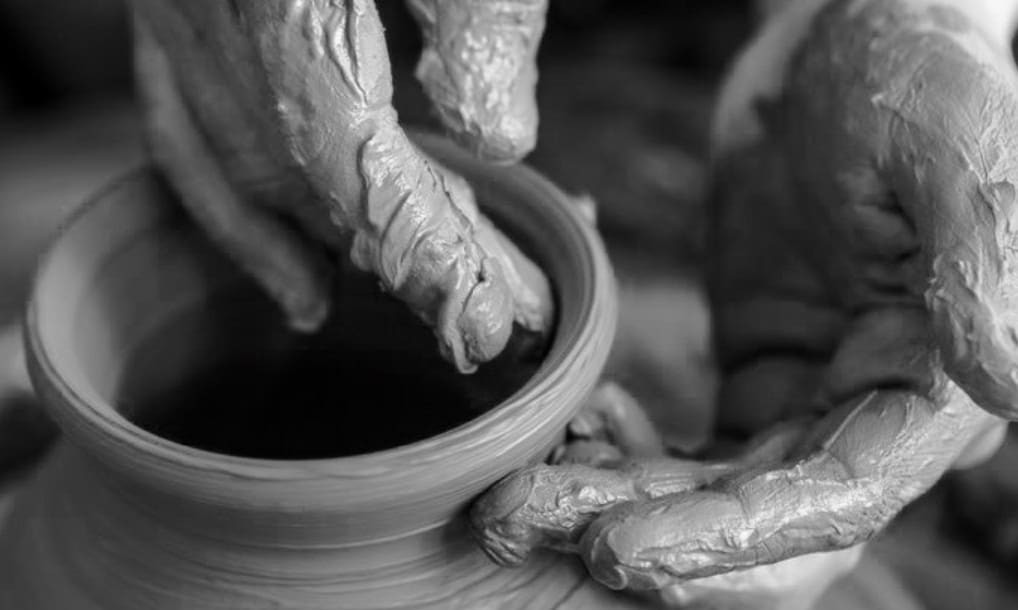
Derived from the Old English word “potian,” meaning “to push,” pottery is most often associated with containers (pots) but can include other objects like figurines, as long as they are made from clay.
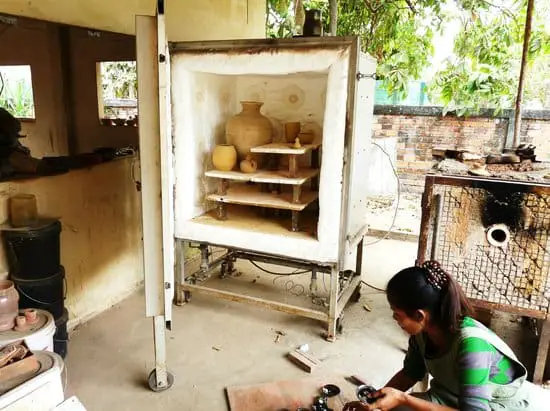
The general process of making pottery involves shaping wet clay and heating it in a kiln to remove the moisture, thereby hardening the clay and making it water- and heat-resistant. Various techniques are also involved in pottery-making, such as throwing on a wheel, coiling, and slip casting.
Types of Pottery
In modern, industrialized nations, pottery can typically be classified in two ways:
- Commercial Pottery: These are mass-produced in factories using molds or automated processes.
- Studio Pottery: These are crafted by individual artisans or in smaller batches, often focusing on unique design and craftsmanship.
There’s also the term “art pottery,” used for pieces considered works of art, irrespective of whether they are mass-produced or crafted by an individual artist.
The Key Differences Between Pottery And Ceramics
There are some critical differences between pottery and ceramics. Both of them are unique, and they have some differences.
Material Scope
One of the primary differences between ceramics and pottery is their range of materials. Ceramics include a wide variety of materials that undergo permanent changes when heated. Pottery, however, is limited to items made from clay.
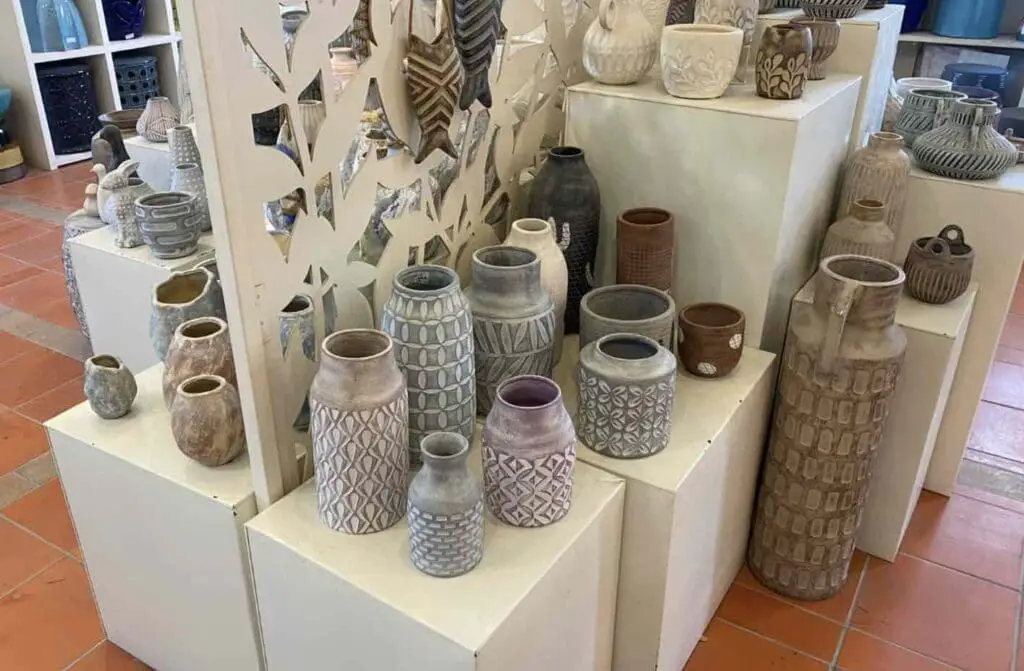
Functionality Vs. Artistry
Ceramics span a spectrum of functionality, from industrial components like car parts to decorative pieces like porcelain dolls.
Pottery generally leans more towards daily utility or aesthetic appeal. Although art ceramics exist, “ceramics” can include entirely functional and valuable items.
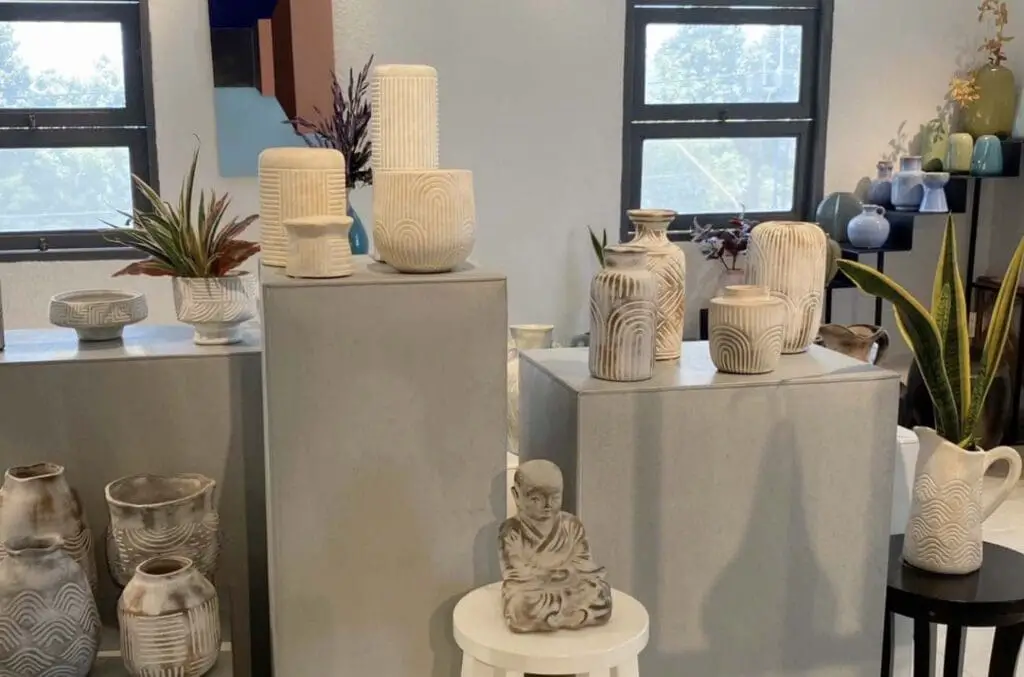
Production Methods
Commercial ceramics are usually produced using advanced methods involving chemistry and material sciences to ensure they meet specific industrial standards. Pottery, mainly studio pottery, often retains a level of artisanship and the “human touch.”
Flexibility In Design
Ceramics offer greater design flexibility because they can be mixed with various materials, such as glass, metals, and other ceramics, providing options for more intricate and varied designs. In contrast, pottery generally offers fewer design options, being primarily made out of clay.
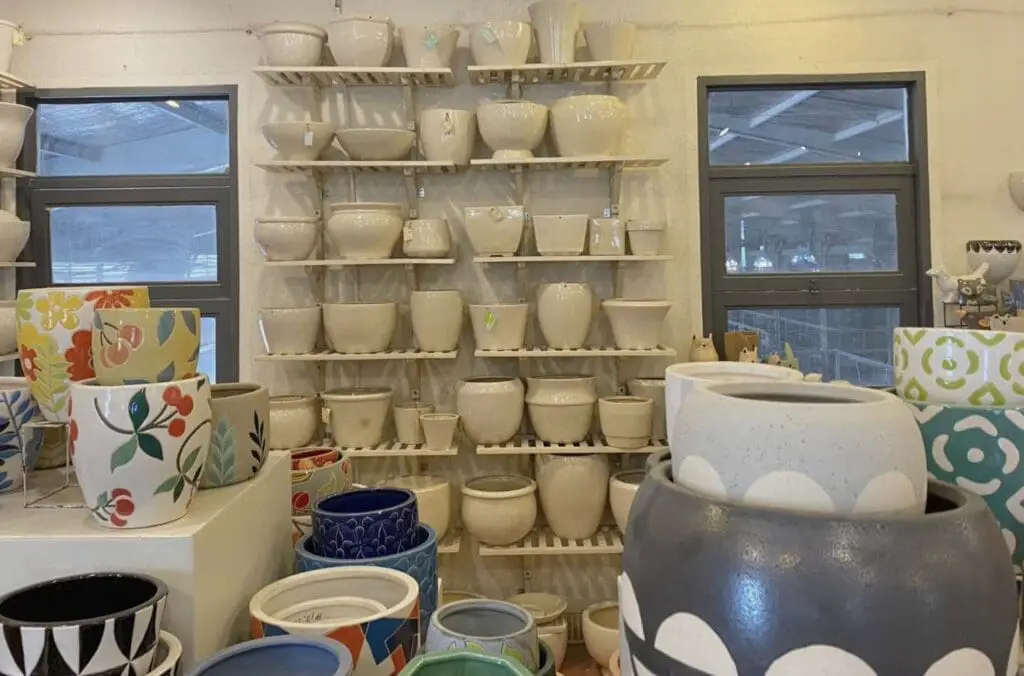
Ceramics offer more flexibility, which is one reason why, at Mondoro, we produce more ceramics than pottery. The flexibility of design means we can do more with ceramics than pottery.
While all pottery is ceramic, not all ceramics are pottery. Pottery is a form of ceramics limited to clay-based objects like pots and decorative items.
As a broader category, ceramics includes many other heat-altered materials in and beyond art and daily utility.
Understanding these differences can deepen our appreciation for these ancient crafts, helping us better appreciate the objects that enrich our daily lives. Whether it’s the delicate porcelain vase that adorns your mantel or the ceramic insulators that make electrical grids possible, the realms of ceramics and pottery are far-reaching. Yet, each holds its unique space in our history and our present.
Find out more about how Mondoro can help you create, develop, and manufacture excellent home decor and furniture products – don’t hesitate to contact me, Anita. Check out my email by clicking here or become a part of our community and join our newsletter by clicking here.
Mondoro gives out a FREE Lookbook to anyone interested. You can receive a copy of our latest Lookbook by clicking here.
Listen to our Podcast called Global Trade Gal. You can find it on all major podcast platforms. Try out to listen to one of our podcasts by clicking here.
Subscribe to our Mondoro Company Limited YouTube Channel filled with great videos and information by clicking here.
Frequently Asked Questions
What is the fundamental distinction between ceramics and pottery?
Ceramics and pottery are often used interchangeably, but they differ in scope. While ceramics encompass a broader range of materials and applications, pottery specifically refers to objects made from fired clay.
Can any clay-made object be considered pottery?
Not necessarily. Pottery involves the shaping and firing of clay, but it must serve a practical or artistic purpose. Everyday items like mugs and bowls fall under pottery, while a ceramic insulator or a tile may not be classified as such.
Is clay the only foundational material for ceramics?
No, ceramics can be made from various materials, including clay, porcelain, and even non-clay minerals. Pottery, however, is predominantly associated with clay-based creations.
How do the crafting techniques differ between ceramics and pottery?
Ceramics cover a wide range of techniques, including hand-building, wheel throwing, and molding. Pottery, on the other hand, is more specific, often involving wheel throwing or hand-building methods.
What distinguishes the cultural and historical significance of ceramics and pottery?
Both ceramics and pottery play crucial roles in cultural heritage, but pottery is deeply rooted in traditional crafts, reflecting regional aesthetics and historical practices. Ceramics, with its broader applications, has a more diverse cultural impact.
Are there technological differences between ceramics and pottery?
Yes, technological advancements in ceramics extend beyond pottery. Ceramics include high-tech applications like electronic components, while pottery tends to focus on traditional craftsmanship.
Can functional items, like your morning mug, be classified as both ceramics and pottery?
Yes, functional items made from fired clay, such as mugs and plates, are considered both ceramics and pottery due to their practical use and the material they are crafted from.
How do the firing processes differ in ceramics and pottery?
The firing processes for ceramics and pottery can vary. Pottery typically involves lower firing temperatures suitable for clay, while ceramics may undergo higher temperature firings, especially when using materials like porcelain.
Are there specific aesthetic differences between ceramics and pottery?
Pottery often embraces traditional aesthetics and may display cultural or regional influences. Ceramics, with a broader scope, can range from traditional to highly contemporary designs.
Can ceramics and pottery coexist in artistic expressions?
Absolutely. Artists often blend techniques and materials, creating pieces that incorporate both ceramic and pottery elements. This fusion allows for diverse and innovative artistic expressions.
Related Content
How Does The Firing Temperature Affect Ceramics Production?
If a ceramic piece is not fired at the correct temperature, it will make a huge difference in the final product’s outcome. It is also important that the correct kiln is used for the production process. This is because many things must be considered when using a kiln to fire ceramics. During the firing process, many things can cause the final product to fail or crack.
You can learn more by reading our blog, How Does The Firing Temperature Affect Ceramics Production?, by clicking here.
Can I Put A Clearcoat On Top Of Lacquer Paint?
We spray a PU topcoat on top of our lacquer products. But to correctly spray the PU top coat, you need first to make sure the lacquer is completely dry, then spray a light PU clear coat on top of the paint. We sand in between each coat to ensure no issues with the topcoat layers.
You can read our blog on Can I Put A Clearcoat On Top Of Lacquer Paint? by clicking here.
3-D Porcelain Manufacturing, All You Need to Know
Home decor and home furnishing products in 3-D continue to be an important home decor trend. Many types of home furnishing products use 3-D elements. The 3-D porcelain is a very unique product in that it is using modern-day computerized technology to efficiently produce a variety of 3-D shapes and sizes.
You can learn more by reading our blog, 3-D Porcelain Manufacturing, All You Need to Know, by clicking here.

